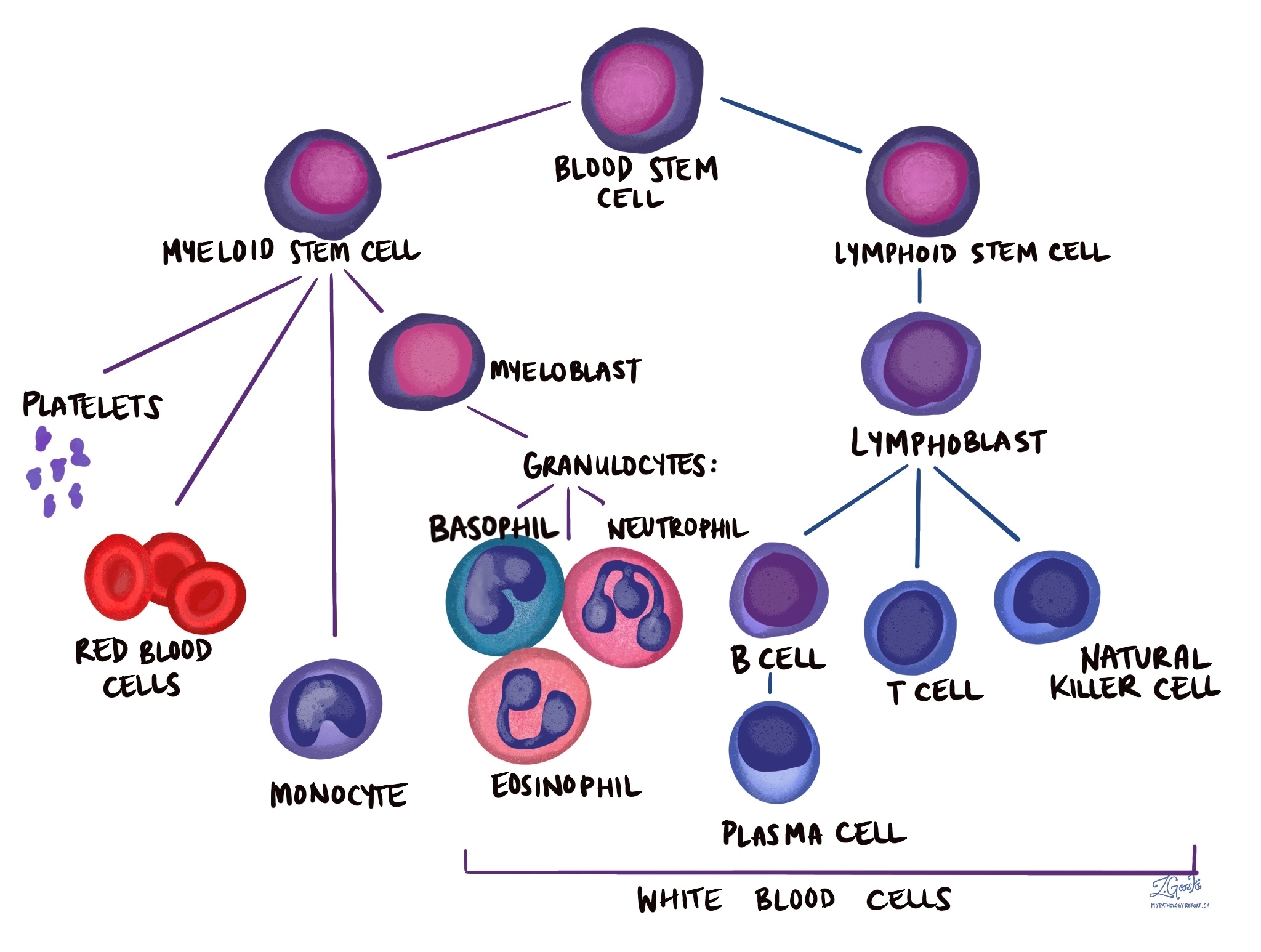Hematopoiesis is the process by which the body produces new blood cells. The word comes from the Greek words “hema,” meaning blood, and “poiesis,” meaning formation. Hematopoiesis is essential for maintaining the body’s supply of red blood cells (RBCs), white blood cells (WBCs), and platelets, which are all crucial for carrying oxygen, fighting infections, and helping the blood to clot.
Where does hematopoiesis usually occur?
In adults, hematopoiesis usually occurs in the bone marrow, which is the soft, spongy tissue inside bones. The bone marrow is the primary site where new blood cells are made. In early development, such as during fetal growth, hematopoiesis can also occur in other organs like the liver and spleen. In some medical conditions, hematopoiesis can happen outside the bone marrow, a process called extramedullary hematopoiesis.
What types of cells are formed by hematopoiesis?
Hematopoiesis produces three main types of blood cells:
- Red blood cells (erythrocytes): These cells carry oxygen from the lungs to the rest of the body and return carbon dioxide from the body to the lungs to be exhaled.
- White blood cells (leukocytes): These cells are part of the immune system and help the body fight infections. There are several types of white blood cells, including neutrophils, lymphocytes, monocytes, eosinophils, and basophils, each with a specific role in defending the body against pathogens.
- Platelets (thrombocytes): These cell fragments are essential for blood clotting. When a blood vessel is injured, platelets gather at the site to help stop the bleeding by forming a clot.
What conditions are associated with abnormal hematopoiesis?
Abnormal hematopoiesis can lead to a variety of health conditions, including:
- Anemia: This condition occurs when there is a deficiency in red blood cells or hemoglobin, leading to fatigue and weakness. It can result from inadequate hematopoiesis in the bone marrow.
- Leukemia: A type of cancer that affects the bone marrow and blood, causing the production of abnormal white blood cells. These cancerous cells can crowd out normal blood cells, leading to various symptoms and complications.
- Myelodysplastic syndromes (MDS): A group of disorders caused by dysfunctional hematopoiesis in the bone marrow, leading to problems with the production of one or more types of blood cells.
- Polycythemia vera: A condition where the bone marrow produces too many red blood cells, leading to thickened blood and an increased risk of blood clots.
- Aplastic anemia: A rare but serious condition where the bone marrow fails to produce enough new blood cells, leading to a shortage of red blood cells, white blood cells, and platelets.
- Bone marrow failure syndromes: These include conditions where the bone marrow is unable to produce enough blood cells, resulting in a deficiency of red blood cells, white blood cells, and platelets.
These conditions can have a wide range of symptoms and may require specialized treatment to manage the effects of abnormal hematopoiesis.




